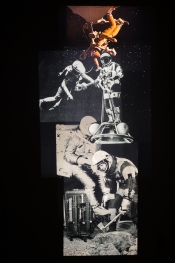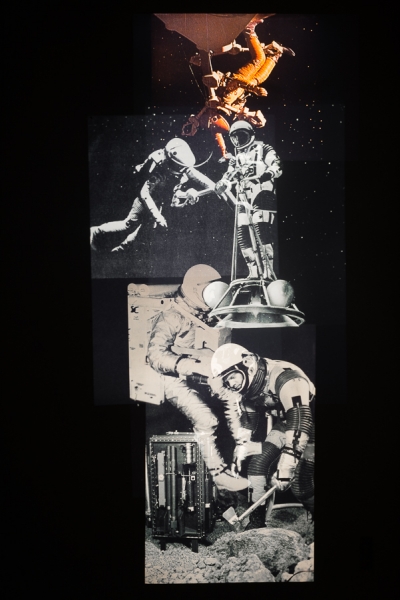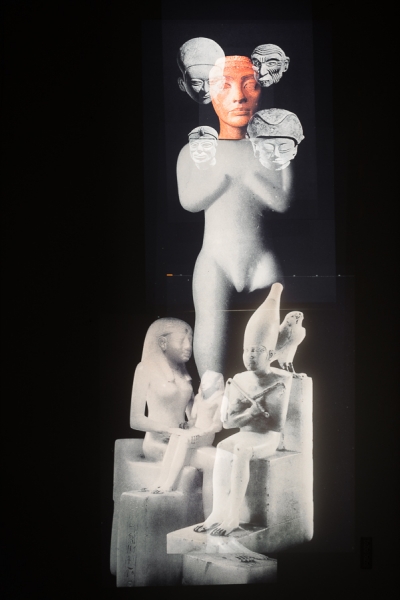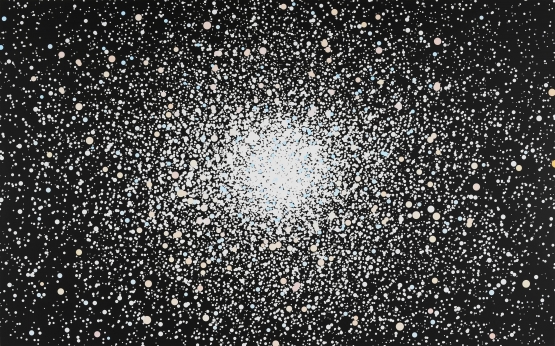THE EYE AS REPRESENTATION AND REVERBERATION OF THE UNIVERSE
In the exhibition, Type I, II and III Civilisations, Rui Toscano (RT) continues, deepens and, to a certain extent, expands his research into the universe of space exploration, that he previously addressed in isolated works and to which he has dedicated several recent exhibitions, including "La Grande Avventura dello Spazio" in the Galeria Cristina Guerra in 2013, and "Journey Beyond the Stars", in the Travessa da Eremida in 2015.
This exhibition showcases a collection of recent or hitherto unseen works that exemplify the broad spectrum of media used by the artist - ranging from sound to light, including photography, painting, drawing and video. The exhibition also highlights the strategies that he has persistently explored over the past 20 years: a practice of appropriation and reuse of pictures, collage and / or assembly of elements that are linked thematically or conceptually; the evocation of scholarly or visionary science fiction cinema, including two classic works, to which he repeatedly returns: Ridley Scott’s "Blade Runner" and Stanley Kubrick’s "2001 - A Space Odyssey"; the central role of perception in the construction of each work, based on the standardization of chance; thematic exploration of the invisible and atmospheric; the approach towards immeasurable scale - the cosmos - and microscopic scale - a speck of dust that flutters in the air.
Perhaps the greatest transformation that has occurred in Rui Toscano’s oeuvre, as highlighted in this exhibition (and suggested, moreover, by the exhibition's title, which is a reference to the Kardashev scale, via which the famous Russian astrophysicist established a quantification of the level of technological advance based on the amount of energy that each civilization can use), is the cosmic alignment of the imaginary universes of historical or fictionally projected civilizations, that are distant in time and space - the Ancient Egyptians, the pre-Columbian peoples, the space adventure of the 1950s and 1960s, and the post-apocalyptic and dystopian world of “Blade Runner” (1982) that envisaged a hopeless future, set in 2019, which, symptomatically, is now very close at hand.
Nuno Faria
Curator














